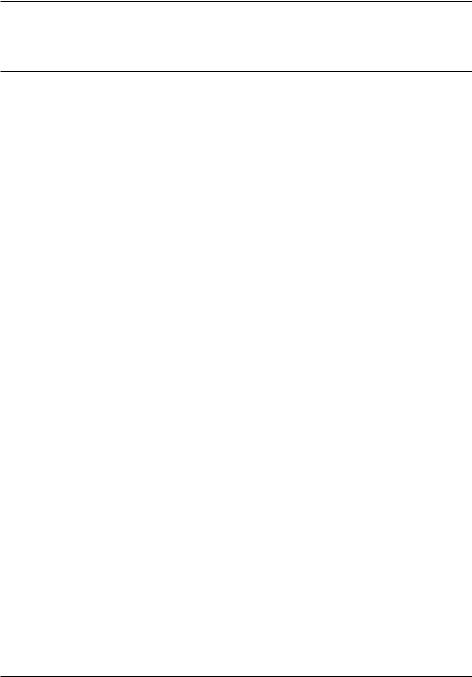
- •Introduction
- •Introduction to Python and its use in science
- •Launching Python
- •Installing Python on your computer
- •The Canopy window
- •The Interactive Python Pane
- •Interactive Python as a calculator
- •Python Modules
- •Variables
- •Importing Modules
- •Getting help: documentation in IPython
- •Programming is a detail-oriented activity
- •Exercises
- •Strings, Lists, Arrays, and Dictionaries
- •Strings
- •Lists
- •NumPy arrays
- •Dictionaries
- •Random numbers
- •Exercises
- •Input and Output
- •Keyboard input
- •Screen output
- •File input
- •File output
- •Exercises
- •Plotting
- •An interactive session with pyplot
- •Basic plotting
- •Logarithmic plots
- •More advanced graphical output
- •Exercises
- •Conditionals and Loops
- •Conditionals
- •Loops
- •List Comprehensions
- •Exercises
- •Functions
- •Methods and attributes
- •Exercises
- •Curve Fitting
- •Exercises
- •Numerical Routines: SciPy and NumPy
- •Special functions
- •Linear algebra
- •Solving non-linear equations
- •Solving ODEs
- •Discrete (fast) Fourier transforms
- •Exercises
- •Installing Python
- •IPython Notebooks
- •Python Resources

CHAPTER
THREE
STRINGS, LISTS, ARRAYS, AND DICTIONARIES
The most import data structure for scientific computing in Python is the NumPy array. NumPy arrays are used to store lists of numerical data and to represent vectors, matrices, and even tensors. NumPy arrays are designed to handle large data sets efficiently and with a minimum of fuss. The NumPy library has a large set of routines for creating, manipulating, and transforming NumPy arrays. NumPy functions, like sqrt and sin, are designed specifically to work with NumPy arrays. Core Python has an array data structure, but it’s not nearly as versatile, efficient, or useful as the NumPy array. We will not be using Python arrays at all. Therefore, whenever we refer to an “array,” we mean a “NumPy array.”
Lists are another data structure, similar to NumPy arrays, but unlike NumPy arrays, lists are a part of core Python. Lists have a variety of uses. They are useful, for example, in various bookkeeping tasks that arise in computer programming. Like arrays, they are sometimes used to store data. However, lists do not have the specialized properties and tools that make arrays so powerful for scientific computing. So in general, we prefer arrays to lists for working with scientific data. For other tasks, lists work just fine and can even be preferable to arrays.
Strings are lists of keyboard characters as well as other characters not on your keyboard. They are not particularly interesting in scientific computing, but they are nevertheless necessary and useful. Texts on programming with Python typically devote a good deal of time and space to learning about strings and how to manipulate them. Our uses of them are rather modest, however, so we take a minimalist’s approach and only introduce a few of their features.
Dictionaries are like lists, but the elements of dictionaries are accessed in a different
29

Introduction to Python for Science, Release 0.9.23
way than for lists. The elements of lists and arrays are numbered consecutively, and to access an element of a list or an array, you simply refer to the number corresponding to its position in the sequence. The elements of dictionaries are accessed by “keys”, which can be either strings or (arbitrary) integers (in no particular order). Dictionaries are an important part of core Python. However, we do not make much use of them in this introduction to scientific Python, so our discussion of them is limited.
3.1 Strings
Strings are lists of characters. Any character that you can type from a computer keyboard, plus a variety of other characters, can be elements in a string. Strings are created by enclosing a sequence of characters within a pair of single or double quotes. Examples of strings include "Marylyn", "omg", "good_bad_#5f>!", "{0:0.8g}", and "We hold these truths ...". Caution: the defining quotes must both be single or both be double quotes.
Strings can be assigned variable names
In [1]: a = "My dog’s name is"
In [2]: b = "Bingo"
Strings can be concatenated using the “+” operator:
In [3]: c = a + " " + b
In [4]: c
Out[4]: "My dog’s name is Bingo"
In forming the string c, we concatenated three strings, a, b, and a string literal, in this case a space " ", which is needed to provide a space to separate string a from b.
You will use strings for different purposes: labeling data in data files, labeling axes in plots, formatting numerical output, requesting input for your programs, as arguments in functions, etc.
Because numbers—digits—are also alpha numeric characters, strings can be made up of numbers:
In [5]: d = "927"
In [6]: e = 927
The variable d is a string while the variable e is an integer. What do you think happens if you try to add them by writing d+e? Try it out and see if you understand the result.
30 |
Chapter 3. Strings, Lists, Arrays, and Dictionaries |

Introduction to Python for Science, Release 0.9.23
3.2 Lists
Python has two data structures, lists and tuples, that consist of a list of one or more elements. The elements of lists or tuples can be numbers or strings, or both. Lists (we will discuss tuples later) are defined by a pair of square brackets on either end with individual elements separated by commas. Here are two examples of lists:
In [1]: a = [0, 1, 1, 2, 3, 5, 8, 13]
In [2]: b = [5., "girl", 2+0j, "horse", 21]
We can access individual elements of a list using the variable name for the list with square brackets:
In [3]: b[0]
Out[3]: 5.0
In [4]: b[1]
Out[4]: ’girl’
In [5]: b[2]
Out[5]: (2+0j)
The first element of b is b[0], the second is b[1], the third is b[2], and so on. Some computer languages index lists starting with 0, like Python and C, while others index lists (or things more-or-less equivalent) starting with 1 (like Fortran and Matlab). It’s important to keep in mind that Python uses the former convention: lists are zero-indexed.
The last element of this array is b[4], because b has 5 elements. The last element can also be accessed as b[-1], no matter how many elements b has, and the next-to-last element of the list is b[-2], etc. Try it out:
In [6]: b[4]
Out[6]: 21
In [7]: b[-1]
Out[7]: 21
In [8]: b[-2]
Out[8]: ’horse’
Individual elements of lists can be changed. For example:
In [9]: b
Out[9]: [5.0, ’girl’, (2+0j), ’horse’, 21]
3.2. Lists |
31 |

Introduction to Python for Science, Release 0.9.23
In [10]: b[0] = b[0]+2
In [11]: b[3] = 3.14159
In [12]: b
Out[12]: [7.0, ’girl’, (2+0j), 3.14159, 21]
Here we see that 2 was added to the previous value of b[0] and the string ’horse’ was replaced by the floating point number 3.14159. We can also manipulate individual elements that are strings:
In [13]: b[1] = b[1] + "s & boys"
In [14]: b
Out[14]: [10.0, ’girls & boys’, (2+0j), 3.14159, 21]
You can also add lists, but the result might surprise you:
In [15]: a |
|
Out[15]: [0, 1, 1, |
2, 3, 5, 8, 13] |
In [16]: a+a |
|
Out[16]: [0, 1, 1, |
2, 3, 5, 8, 13, 0, 1, 1, 2, 3, 5, 8, 13] |
In [17]: a+b |
|
Out[17]: [0, 1, 1, |
2, 3, 5, 8, 13, 10.0, ’girls & boys’, (2+0j), |
3.14159, |
21] |
Adding lists concatenates them, just as the “+” operator concatenates strings.
3.2.1 Slicing lists
You can access pieces of lists using the slicing feature of Python:
In [18]: b
Out[18]: [10.0, ’girls & boys’, (2+0j), 3.14159, 21]
In [19]: b[1:4]
Out[19]: [’girls & boys’, (2+0j), 3.14159]
In [20]: b[3:5]
Out[20]: [3.14159, 21]
You access a subset of a list by specifying two indices separated by a colon “:”. This
32 |
Chapter 3. Strings, Lists, Arrays, and Dictionaries |

Introduction to Python for Science, Release 0.9.23
is a powerful feature of lists that we will use often. Here are a few other useful slicing shortcuts:
In [21]: b[2:]
Out[21]: [(2+0j), 3.14159, 21]
In [22]: b[:3]
Out[22]: [10.0, ’girls & boys’, (2+0j)]
In [23]: b[:]
Out[23]: [10.0, ’girls & boys’, (2+0j), 3.14159, 21]
Thus, if the left slice index is 0, you can leave it out; similarly, if the right slice index is the length of the list, you can leave it out also.
What does the following slice of an array give you?
In [24]: b[1:-1]
You can get the length of a list using Python’s len function:
In [25]: len(b)
Out[25]: 5
3.2.2 Creating and modifying lists
Python has functions for creating and augmenting lists. The most useful is the range function, which can be used to create a uniformly spaced sequence of integers. The general form of the function is range([start,] stop[, step]), where the arguments are all integers; those in square brackets are optional:
In [26]: range(10) # makes a list of 10 integers from 0 to 9
Out[26]: [0, 1, 2, 3, 4, 5, 6, 7, 8, 9]
In [27]: range(3,10) # makes a list of 10 integers from 3 to 9
Out[27]: [3, 4, 5, 6, 7, 8, 9]
In [28]: range(0,10,2) # makes a list of 10 integers from 0 to 9
# with increment 2
Out[28]: [0, 2, 4, 6, 8]
You can add one or more elements to the beginning or end of a list using the “+” operator:
In [29]: a = range(1,10,3)
3.2. Lists |
33 |

Introduction to Python for Science, Release 0.9.23
In [30]: a |
|
|
Out[30]: [1, |
4, 7] |
|
In [31]: a += [16, |
31, 64, 127] |
|
In [32]: a |
|
|
Out[32]: [1, |
4, 7, |
16, 31, 64, 127] |
In [33]: a = |
[0, 0] + a |
|
In [34]: a |
|
|
Out[34]: [0, |
0, 1, |
4, 7, 16, 31, 64, 127] |
You can insert elements into a list using slicing:
In [35]: b = a[:5] + [101, 102] + a[5:]
In [36]: b
Out[36]: [0, 1, 1, 4, 7, 101, 102, 16, 31, 64, 127]
3.2.3 Tuples
Finally, a word about tuples: tuples are lists that are immutable. That is, once defined, the individual elements of a tuple cannot be changed. Whereas a list is written as a sequence of numbers enclosed in square brackets, a tuple is written as a sequence of numbers enclosed in round parentheses. Individual elements of a tuple are addressed in the same way as individual elements of lists are addressed, but those individual elements cannot be changed. All of this illustrated by this simple example:
In [37]: c = (1, 1, 2, 3, 5, 8, 13)
In [37]: c[4]
Out[38]: 5
In [39]: c[4] = 7
---------------------------------------------------------------------------
TypeError: ’tuple’ object does not support item assignment
When we tried to change c[4], the system returned an error because we are prohibited from changing an element of a tuple. Tuples offer some degree of safety when we want to define lists of immutable constants.
34 |
Chapter 3. Strings, Lists, Arrays, and Dictionaries |
